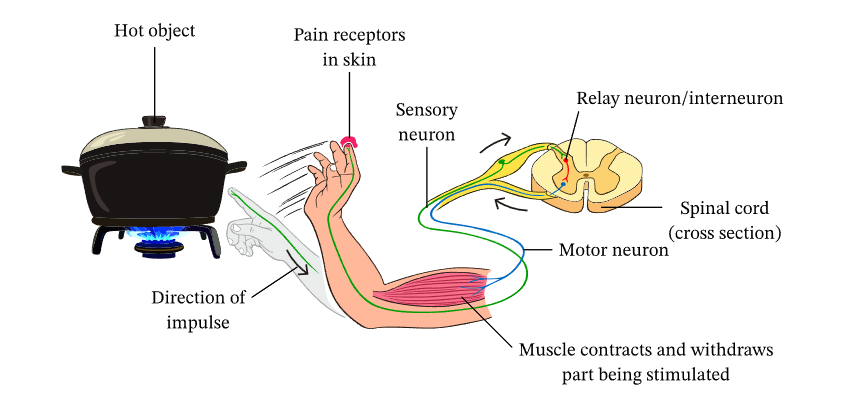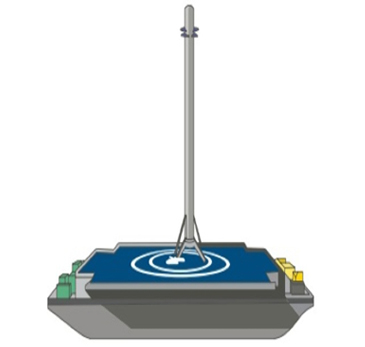
"Bio-Control Systems Explained: How Human Reflexes Inspire Smart Engineering Models"
[Or]
"Physiological Control Systems: Using
Reflexes to Master Control Theory"
Have you ever accidentally touched something hot and pulled your hand away before you could even think about it?

That lightning-fast reaction isn’t just biology doing its job, it’s a precision-engineered control system at work.
Yes, your body works just like a control system and in many ways, it's smarter and more adaptable than the machines we build.
But here’s the kicker: once you understand how the body maintains internal balance, you'll start designing better systems both in machines and in medicine.
What is a Bio-Control System?
In engineering, control systems help machines respond to changes—like how cruise control adjusts your car’s speed when going uphill. In biology, your body constantly monitors and adjusts everything from your heart rate to your blood pressure, blood glucose levels, and even breathing.
This is homeostasis in action. And all this is powered by feedback loops—the same principle used in engineering systems.
The Baroreceptor Reflex: A Biological PID Controller?
Let’s take the baroreceptor reflex as an example. It’s how your body maintains blood pressure. Your body senses any drop in pressure through baroreceptors, sends a signal to the brainstem, and corrects it by altering heart rate and blood vessel tone.
Sounds familiar? That’s:
- Input → Blood pressure change
- Controller → Brainstem (control logic)
- Actuator → Heart and blood vessels
- Output → Restored blood pressure
You’re looking at a closed-loop control system with feedback—biological PID in action.
Going Deeper: Modelling Real Human Reflexes
Let’s push further. Here are real-world models we explore in the course—each one packed with insights for control system engineers:
Simple Models of the Muscle Stretch Reflex Action
Explore how your muscles resist overstretching using a basic proportional feedback loop. Perfect for understanding low-order system behaviour in the human body.
Steady-State Analysis of the Muscle Stretch Reflex
Examine what happens when the stretch is held constant. Discover how muscles maintain tonic control using feedback stability and equilibrium points.
Stability Analysis of the Pupillary Light Reflex
Small pupils in bright light? It’s not just instinct—it’s feedback with stability margins. Learn how the light reflex avoids oscillations and adapts to changes in input.
Why Should Engineers Care?
Because this is where engineering meets biology.
If you're:
- Building biomedical devices
- Simulating physiological systems
- Creating AI systems inspired by the nervous system
- Or just love control theory and its real-world applications...
Then Bio-Control Systems is your next big leap.
And you don’t need to memorise biology. You need to understand the control logic behind it—and that’s where engineering shines.
Ready to See This in Action?
MTutor created a free Matlab coding where we simulate the steady state analysis of muscle stretch reflex action using MATLAB/Simulink.
MATLAB link: https://www.mycompiler.io/view/LBAWFBG40jO
You’ll see how:

- How the body uses proportional feedback to resist muscle overstretching
- What steady-state and transient responses reveal about reflex dynamics
- How to model reflex arcs using control system building blocks like gains, delays, and feedback loops
Go Deeper: Master Bio-Control Systems
This blog is just the beginning.
The full video course on Bio-Control Systems includes:
- Modelling physiological systems
- Using block diagrams, transfer functions, and feedback loops
- Case studies like temperature regulation, glucose control, and respiration
- Hands-on simulations with MATLAB/Simulink
Who This Course Is For
Who Should Take This Course?
- Engineering students curious about biology
- Biomedical engineers modelling physiological systems
- Control engineers exploring nonlinear systems
- Educators teaching interdisciplinary control theory
Bonus Resources: Explore Control System Design Tools
Once you understand how biological systems behave like control systems, it’s time to build and test your controllers. Whether it’s for physiological models or engineering systems, tools like Scilab make it easy to simulate, experiment, and learn.
Check out these hands-on video lessons:
Introduction to Scilab:
Start with the basics of this open-source alternative to MATLAB.
Design of PID Controller Using Scilab:
Learn how to implement and tune PID controllers step-by-step.
These tools are perfect for bringing Bio-Control System/ Control system Engineers models to life.







